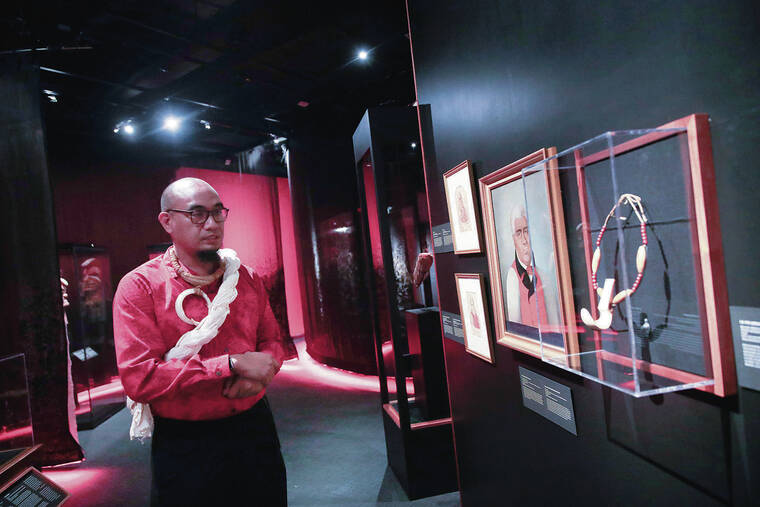Bernice Pauahi Bishop Museum’s newest exhibit, “Ka ‘Ula Wena: Oceanic Red,” explores the manifestations of the color red in landscapes, memory and created expressions throughout the various cultures in Oceania.
The exhibit opens today and will coincide with the 13th annual Festival of Pacific Arts and Culture, to celebrate the communities and cultural stories across the Pacific, said Marques Hanalei Marzan, one of the four co-curators of the exhibit and a cultural adviser at Bishop Museum.
“The color red in Hawaii has particular ties to chiefly status, responsibilities, genealogy … and we understood that it was similar in many cultures across the Pacific,” Marzan said. “The essence of this exhibition is to really promote the collective understanding of what that means.”
The exhibit was first envisioned to be held alongside FestPAC in 2020 but was postponed when the festival was, Marzan said. Now that both are scheduled to take place, visitors can expect to see pieces from many of the same cultures that will be represented at the long-awaited FestPAC, he said.
“We tried to incorporate as many of the festival delegation countries within the exhibition as possible,” Marzan said. “Because all of the delegations will be coming here, we really hoped to find ways to engage with them in more meaningful ways.”
Items displayed include contemporary and generational pieces from archaeology, natural science and cultural collections, all provided by various institutions such as Bishop Museum, National Museum of New Zealand and British Museum. The blend of old and new pieces shows how cultures across Oceania have continued to evolve over time, Marzan said.
Toward the back of the exhibit, Marzan pointed out the front wall of a “pataka” on display. The five-panel wooden structure was brought from Aotearoa, New Zealand, and was used by Maori communities to store food. The ancestral carvings on its front represent protection of the important store of food, while showcasing generational connections within a community, Marzan said.
Displayed near the front of the exhibit is a “kava mugi mugi,” a Fijian cordage composed of hundreds of meters of twisted, reddish-brown coconut husk fibers. The cordage is used to lash together homes or in ceremonies to mourn the deceased, according to a news release.
Like the intent behind the exhibition, Marzan described both pieces as clear representations of the significance of community and the cultures of those who created them.
“This exhibition is really a celebration of life, of community practices, stories, culture and how that constantly exists throughout generations,” he said. “It tells the story of life and how the people of the Pacific … are vibrant and constantly evolving with our world.”
The exhibit is being featured in the museum’s Castle Memorial Building and will be available to view through Jan. 12.
Linsey Dower covers ethnic and cultural affairs and is a corps member of Report for America, a national service organization that places journalists in local newsrooms to report on undercovered issues and communities.
Read More: World News | Entertainment News | Celeb News
Star Ads
